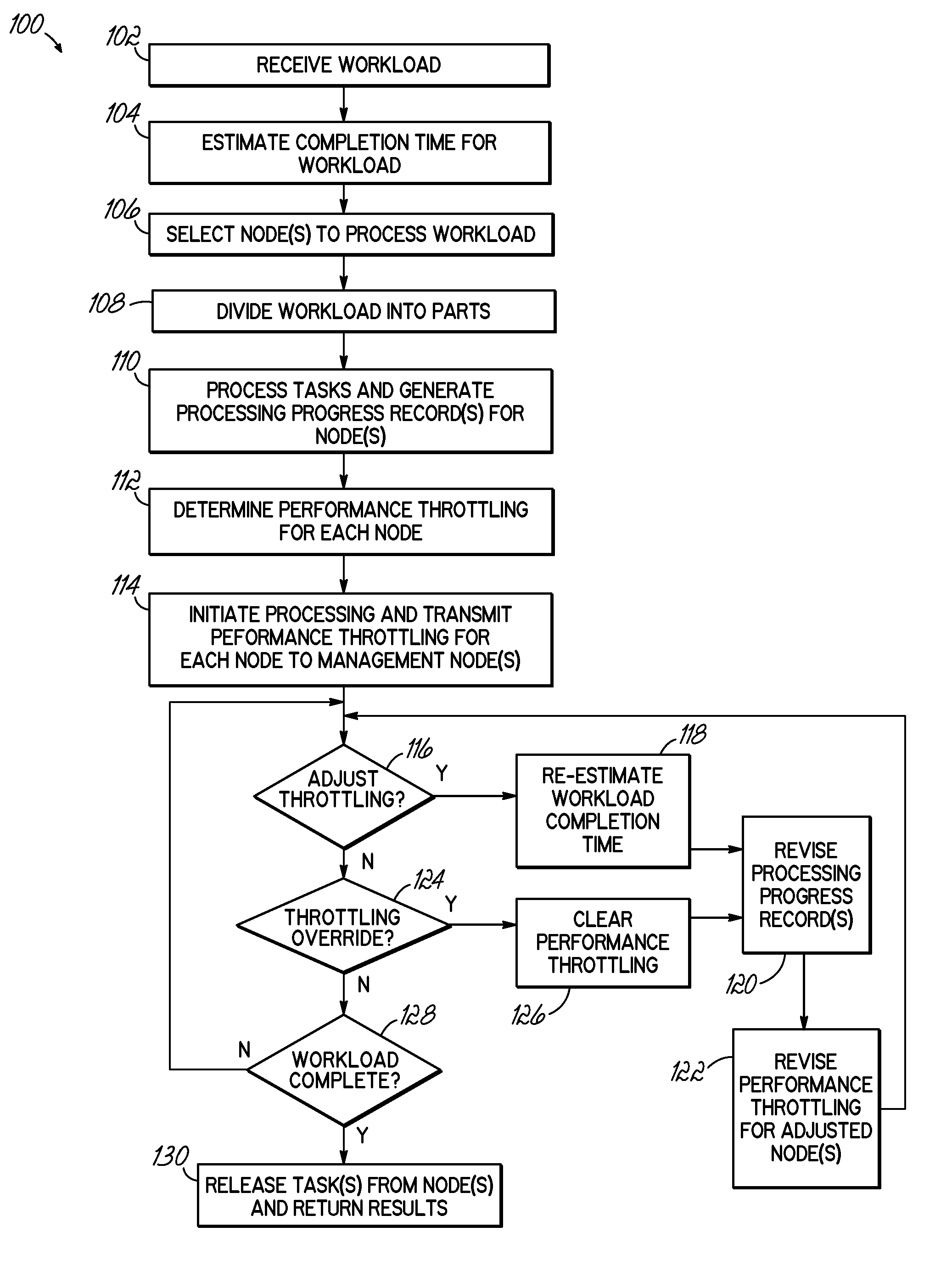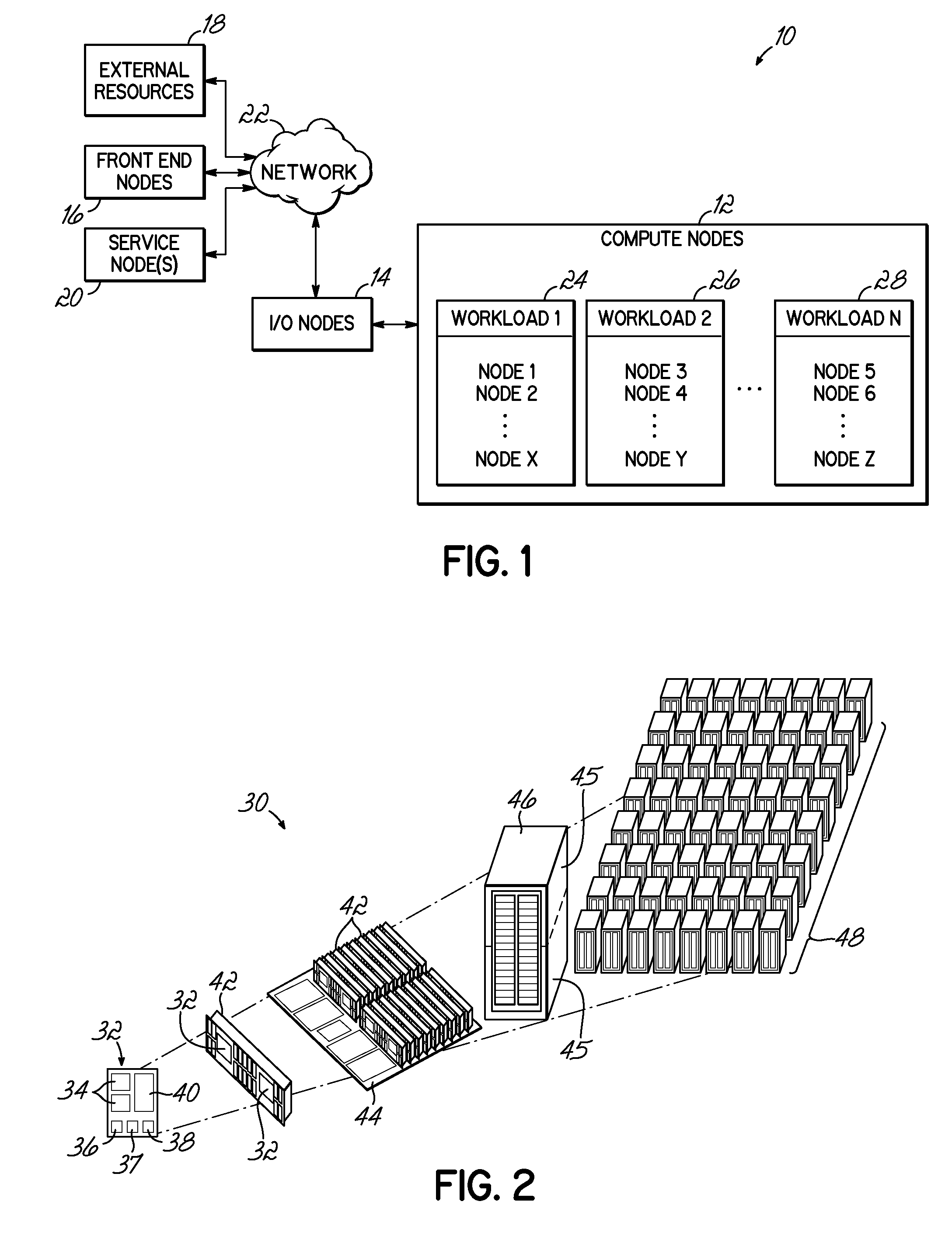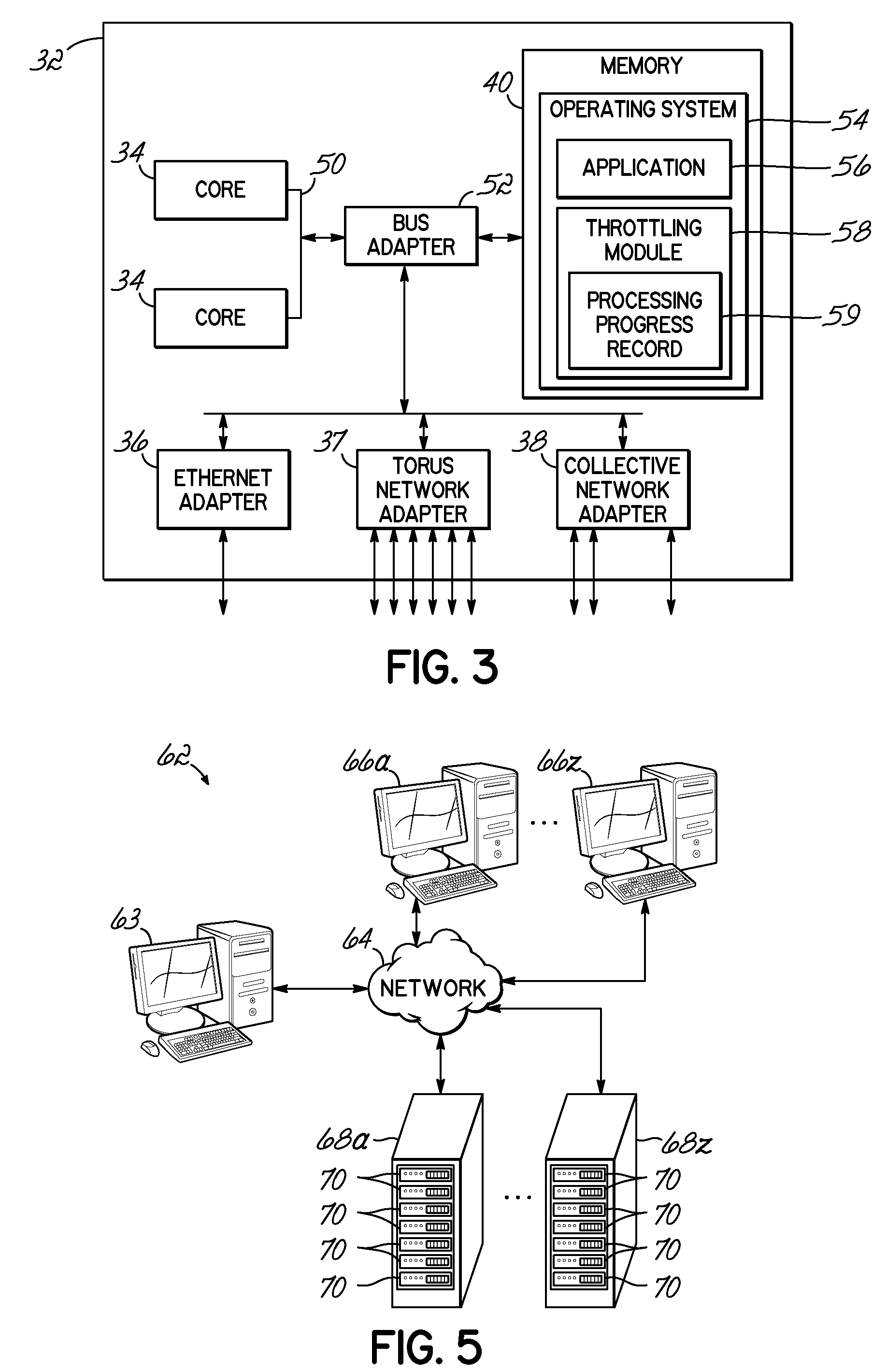Power adjustment based on completion times in a parallel computing system
a technology of parallel computing and completion time, applied in the field of computing systems, can solve problems such as increasing power consumption, and achieve the effects of reducing power consumption, reducing power consumption, and reducing power consumption
- Summary
- Abstract
- Description
- Claims
- Application Information
AI Technical Summary
Benefits of technology
Problems solved by technology
Method used
Image
Examples
example 1
No Performance Throttling
[0065]By way of example, the system 10 may include at least five cores 34 and receive a first and second workload. The first workload (workload “A”) may be divided into six tasks (illustrated as tasks A1-A6), while the second workload (workload “B”) may not be divided (e.g., workload B is a single task, illustrated as task B1). FIG. 7 is a diagrammatic illustration 140 of how tasks A1-A6 and task B1 may be scheduled and executed across the five cores (labeled cores 1-5) consistent with conventional parallel processing systems. As illustrated in FIG. 7, as well as FIG. 8 and FIG. 9, the x-axis of each illustration diagrammatically illustrates time. As such, workload A is divided into six tasks (e.g., A1-A6) and scheduled across the five cores 34, each core 34 operating to execute each task as quickly as possible. Workload B, which is received after workload A, is scheduled shortly after workload A. As shown in FIG. 7, workload A is time-limited by task A1, re...
example 2
Performance Throttling
[0066]FIG. 8 is a diagrammatic illustration 150 of how tasks A1-A6 and task B1 might be scheduled, and the performance of cores 1-5 throttled, consistent with embodiments of the invention. As shown in FIG. 8, the original workload completion time is indicated by a dashed line and may represent when the last of the tasks of the workload A are expected to be completed. This dashed line is also shown in FIG. 7, for illustrative purposes. Returning to FIG. 8, task A1 is still the time limiting task. However, other cores 34 are throttled to conform the completion times of those cores 34 to the completion time of the core 34 executing task A1 (i.e., core 1). As such, task A2 completes at substantially the same time as task A1, while task A3 may complete at a time somewhat before the workload completion time for workload A. The combination of tasks A4 and A5 may complete at a time somewhat later than the workload completion time for workload A, which, though later, st...
example 3
Levels of Performance Throttling
[0067]FIG. 9 is a diagrammatic illustration 160 that shows the level of performance throttling for the cores 34 executed tasks A1-A6 of workload A and task B1 of workload B illustrated in FIG. 8. Again, the original workload completion time is indicated by a dashed line and may represent when the last of the tasks of the workload A are expected to be completed in FIG. 9. As illustrated in FIG. 9, core 1 operates at 100% of its full performance to execute task A1 and complete that task by the workload completion time for workload A. However, core 2 is throttled to operate at 50% of its full performance to execute task A2 and complete that task by the workload completion time. Core 3 undergoes two separate performance throttling adjustments consistent with embodiments of the invention. Program code may determine that core 3 can operate at 20% of its full performance to complete Task A3 by the workload completion time. At some point in time, the program ...
PUM
 Login to View More
Login to View More Abstract
Description
Claims
Application Information
 Login to View More
Login to View More - R&D
- Intellectual Property
- Life Sciences
- Materials
- Tech Scout
- Unparalleled Data Quality
- Higher Quality Content
- 60% Fewer Hallucinations
Browse by: Latest US Patents, China's latest patents, Technical Efficacy Thesaurus, Application Domain, Technology Topic, Popular Technical Reports.
© 2025 PatSnap. All rights reserved.Legal|Privacy policy|Modern Slavery Act Transparency Statement|Sitemap|About US| Contact US: help@patsnap.com



